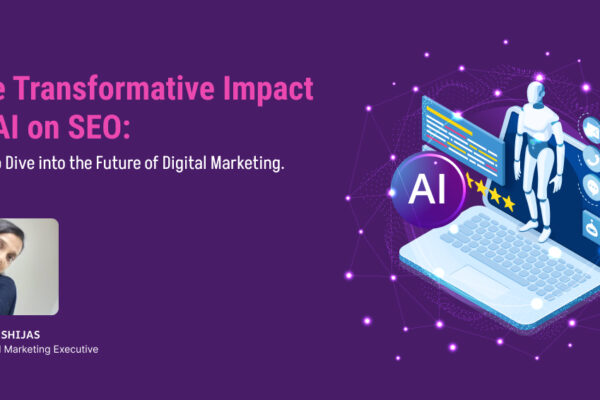In today’s digital landscape, content development is becoming increasingly important for businesses seeking to effectively communicate with their audiences. The field of content creation is changing significantly with the introduction of artificial intelligence (AI). AI-powered tools and methods present previously unheard-of chances to scale and optimise content creation processes, empowering companies to generate excellent content quickly. We’ll look at ten strategies in this article to use AI technologies to scale your content development process.
1. Define Your Objectives:
Start by explicitly identifying your content creation goals and objectives. Choose the kind of content you intend to produce (blogs, articles, videos, social media posts, etc.), the demographics of your target audience, and the key performance indicators (KPIs) that will be used to gauge your progress. By following this fundamental step, you can make sure that your content strategy is in line with your entire business goals.
2. Conduct Audience Research:
Use AI-driven analytics technologies to learn about your target audience’s preferences, interests, and behaviours. Analyse data from social media platforms, website analytics, and market research papers to uncover patterns and themes that are relevant to your audience. Content creation that engages and converts requires a thorough understanding of your audience’s demands.
3. Leverage AI Content Generation Tools:
Explore AI-powered content creation tools such as natural language processing (NLP) platforms and generative AI models. Experiment with tools like GPT-3 , Gemini, and Jasper. AI. Use AI to integrate machine-generated content into your worklfows and enhance your output.
4. Implement Content Curation Algorithms:
Use AI algorithms for content curation to find relevant articles, news items, and multimedia content from all over the web. Prioritise and filter material using machine learning algorithms according to engagement metrics, quality, and relevancy. With minimal time and resource commitment, content curation tools can assist you in finding new concepts and keeping up of industry developments.
5. Optimize SEO with AI:
Leverage AI-powered SEO tools to improve the discoverability and ranking of your content on search engine results pages (SERPs). Use AI algorithms to perform keyword research, optimise meta tags, and analyse rival strategies. Platforms for SEO with AI capabilities might offer useful insights to raise the exposure and organic traffic of your content.
6. Personalize Content Experiences:
Use personalisation strategies driven by AI to customise content for each user. Analyse user behaviour, preferences, and past interactions with machine learning algorithms. Using user profiles and real-time data, present tailored advice, suggested products, and dynamic content.
7. Automate Content Distribution:
Schedule and publish material through various channels, such as social media, email newsletters, and content management systems (CMS). AI algorithms can optimize posting times, format content for different platforms, and track performance metrics to maximize reach and engagement.
8. Enhance Visual Content with AI:
AI-powered design and editing tools can help you create better visual content. Create unique images, infographics, and visualisations based on textual material by utilising computer vision algorithms. Try out AI-powered picture and video editing tools to improve the calibre, appeal, and appearance of your multimedia material.
9. Analyze and Iterate:
Make use of AI-powered analytics tools to evaluate the effectiveness and influence of your content on different platforms. Monitor important data including ROI (return on investment), conversion rates, and engagement. Utilise machine learning algorithms to conduct trend analysis, find patterns in data, and derive practical insights for future content strategy optimisation.
10. Continuously Learn and Adapt:
Stay up to date on the latest developments in AI technology and content marketing best practices. Try out new AI tools, methods, and approaches to continually innovate and improve your content creation process. Encourage your staff to learn from and try new things in order to adjust to changing consumer preferences and market conditions.
How does your content affect Google search results?
Google prioritises user-centric content, stressing its authority, usefulness, and quality. Google’s algorithm changes, which are aimed at enhancing relevance and user experience, make this focus clear. The creation of insightful, well-written material that offers a flawless on-page experience should be the top priority for content developers.
Google’s guidelines stress the importance of user value while without prescribing any particular creation methods. AI and human insights can be combined in content methods that work well to create high-quality, audience-focused content.
Google’s SGE has two implications for content creators. Content needs to be discoverable and optimised for Google search results in order to have a better chance of being listed in the SGE. This needs an emphasis on search engine optimization (SEO) tactics, including keyword research, metadata optimization, and content quality.
Want to level up your content strategy? Start with these 5 essentials!
1. Content audit
A content audit entails a thorough examination and evaluation of every piece of content on your website or other digital platform. This procedure includes classifying the content, assessing its effectiveness, and pinpointing areas in need of development. An evaluation of indicators like traffic, engagement, and SEO efficacy can assist identify content that is relevant, out-of-date, or duplicate. It guarantees that content improves user experience, increases search engine rankings, and supports your company’s objectives. You can maintain high-quality, current, and relevant content that better serves your audience’s demands and improves your business outcomes by conducting regular content audits.
2. Forecasting
Forecasting in content creation is anticipating future trends and audience preferences in order to drive the creation of relevant and interesting content. Through the examination of historical performance data, social media patterns, and market fluctuations, content producers may predict the subjects that will captivate their viewership. Planning editorial schedules, maximising marketing tactics, and guaranteeing that material is relevant and timely are all made easier with this proactive approach. Forecasting that works improves audience engagement, increases brand relevance, and aids in strategic decision-making, all of which contribute to better outcomes and the accomplishment of long-term content marketing objectives.
3. Content marketing plan
Effective content generation requires a well-thought-out content marketing strategy. Establish specific goals and your target audience first. To find pertinent subjects and optimise material for search engines, do in-depth keyword research. To plan frequent postings of blog entries, social media updates, videos, and infographics, create a content calendar. Make a point of creating informed, interesting, and high-quality material that speaks to the interests and problems of your audience. To increase reach, make use of a variety of channels and formats. To keep your content useful and current, track performance using analytics, modify plans depending on observations, and constantly improve it.
4. Content calendar
A content calendar is a strategic tool for planning, organising, and scheduling content across several channels. It guarantees a unified and consistent message strategy by outlining what material will be released, when, and where. Target audience, publication dates, distribution routes, and content themes are important factors. Teams can coordinate their efforts, prevent duplication, and guarantee on-time delivery by visualising the content pipeline. A well-organized content calendar is a crucial part of any content marketing plan since it increases productivity, aligns with strategic objectives, and facilitates improved tracking of content performance.
5. Performance reporting
Performance reporting in content development entails measuring and analysing a variety of data to assess content efficacy and reach. Website traffic, engagement rates, social media interactions, conversion rates, and SEO rankings are examples of key performance indicators (KPIs). Data collection is aided by tools such as SEO platforms, social media insights, and Google Analytics. Frequent performance reports show what material is most popular with the audience, point out areas that need work, and provide direction for future content plans. By ensuring that content initiatives are in line with company objectives, good performance reporting raises the effectiveness and return on investment (ROI) of marketing.
Conclusion:
In the age of AI, scaling your content creation process necessitates a planned approach that takes advantage of sophisticated technology and data-driven insights. Through the use of AI technologies, automation, and personalisation, together with well-defined goals, businesses may improve productivity, foster innovation, and achieve significant outcomes from their content marketing endeavours. Accept the potential of AI to open up new avenues and achieve more success in your content production projects.
We are experts at creating content and using SEO techniques at Nuventure to improve your online visibility. Our team creates engaging and customised content that connects with your audience and encourages interaction and sales.We optimise your content to stay ahead of the competition and maximise your online growth since we have a thorough awareness of the always changing AI digital ecosystem. Partner with Nuventure for comprehensive content creation and SEO solutions tailored to your business objectives.

